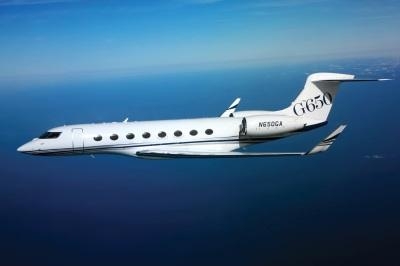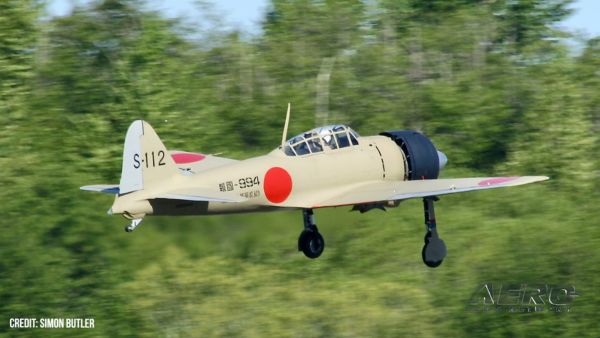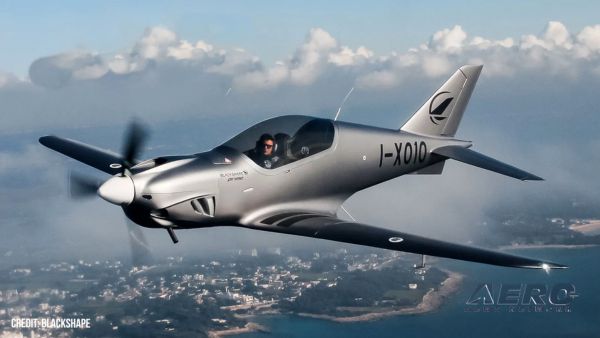Projection Based On Corporate Profitability, Considerable Pent-Up Demand
In a report titled "Civil Aircraft: The Market for Business Jet Aircraft," MarketResearch.com says that the market for business jet aircraft is showing signs of recovery from the global economic downturn. Recent corporate profitability signals the potential for future market improvement. Surveys of aircraft operators indicate that considerable latent demand exists in the business jet aircraft market, and corporate cash reserves are high and ripe for re-equipping and upgrading aircraft fleets. It indicates that the market has a 10-year value of over $230 billion.

This market study includes a year-by-year production forecast of business jet aircraft currently in production or expected to enter production within the next 10 years. These individual forecasts are the result of an exhaustive macro-level examination of the market as well as a micro-level bottom-up analysis of individual business jets versus their direct and indirect competitors, the researchers say.
This market study covers eight separate classes of business jet aircraft, including Very Light Jets (VLJs), light business jets, light medium business jets, medium business jets, super mid-size business jets, large business jets, long-range business jets, and airliner-type business jets. These classes of business aircraft are statistically analyzed individually, and a 10-year forecast for each aircraft within each of the different classes is provided in terms of both units and value. In the overall market, some business aircraft are powered by turbine- and piston-powered propeller engines; this market study focuses strictly on turbofan-powered aircraft. The other types of business aircraft are covered in other Forecast International market intelligence reports.
Unlike the market for large commercial jet transports and the market for regional transport aircraft, the market for business jet aircraft has faced little competition from the up-and-coming Chinese manufacturing conglomerates COMAC and AVIC, or from the Russian aircraft manufacturers. The main players within this market remain Airbus and its ACJ; Boeing and its BBJ; Bombardier and its Learjet and Global; Cessna and its Citation, CJ, Mustang and Sovereign; Dassault and its Falcon; Embraer with the Phenom and Legacy; Gulfstream and its G models; and both Hawker Beechcraft and Honda with their light and very light business jets. Although the competition has not expanded in terms of number of manufacturers vying for market share, the number of models and configurations has grown significantly. Currently, this market report covers 12 manufacturers and encompasses 55 separate models of business jet aircraft within the eight classes.
In developing its business jet aircraft forecast, Forecast International takes into consideration all relevant market factors and industry data. These include, but are not limited to, the volume of aircraft orders, letters of intent, and other types of purchase commitments; OEM marketing strategies; changes in the business aircraft customer base (geographic and otherwise); historical and planned production rates; trends in aircraft capacity, performance, and operating efficiency; and the inventories of used aircraft for sale. In addition, economic trends are studied, including GDP growth, inflation, and corporate profitability.
 ANN's Daily Aero-Term (05.07.25): Terminal Radar Service Area
ANN's Daily Aero-Term (05.07.25): Terminal Radar Service Area ANN's Daily Aero-Linx (05.07.25)
ANN's Daily Aero-Linx (05.07.25) Classic Aero-TV: Anousheh Ansari -- The Woman Behind The Prize
Classic Aero-TV: Anousheh Ansari -- The Woman Behind The Prize NTSB Prelim: Bell 206B
NTSB Prelim: Bell 206B Airborne-NextGen 05.06.25: AF Uncrewed Fighters, Drones v Planes, Joby Crew Test
Airborne-NextGen 05.06.25: AF Uncrewed Fighters, Drones v Planes, Joby Crew Test



